#Queens of England
Text

Cotton. Vesp. F. xiii. f.. 49 containing the inscription: thys boke ys myn elysabeth the kyngs dawghtyr (this book is mine elizabeth the king's daughter) written by Elizabeth of York
#medieval manuscripts#medieval history#elizabeth of york#tudor history#queens of england#historicwomendaily#15th century#english history#medieval england#medieval women
69 notes
·
View notes
Text

One more year and it will be done 😂
21 notes
·
View notes
Text
Throwback to the beautiful Dorothy Tutin as English consorts, Queens Anne Boleyn, second wife of Henry VIII and mother to Elizabeth I, and Queen Henrietta Maria, wife of Charles I and mother to Charles II and James II.

Out of all the Anne Boleyns, Dorothy is one of my favorites because she showed the good and bad aspects of Anne’s character and the way she conducted herself before her trial and afterwards confessed to Cranmer were very powerful and moving scenes. In my opinion, it is one of the best historical dramas about the six wives that gets better with every rewatch.
As Henrietta Maria, Dorothy Tutin also did a great job showing the only complex character in a movie that was meant to show either saintly flawless characters or inept and corrupt ones.
At the beginning we think we are going to introduce the archetypical evil woman of Cromwell’s imagination but instead we are treated to a woman who’s proud of her lineage, but also a deeply devoted, caring wife and mother who believes she’s doing what is in the best interest for her husband and her family.
#dorothy tutin#period dramas#show: henry viii and his six wives 1970#anne boleyn#movie: Cromwell#henrietta maria#queens of england#tudors#stuarts
6 notes
·
View notes
Text

10 notes
·
View notes
Text
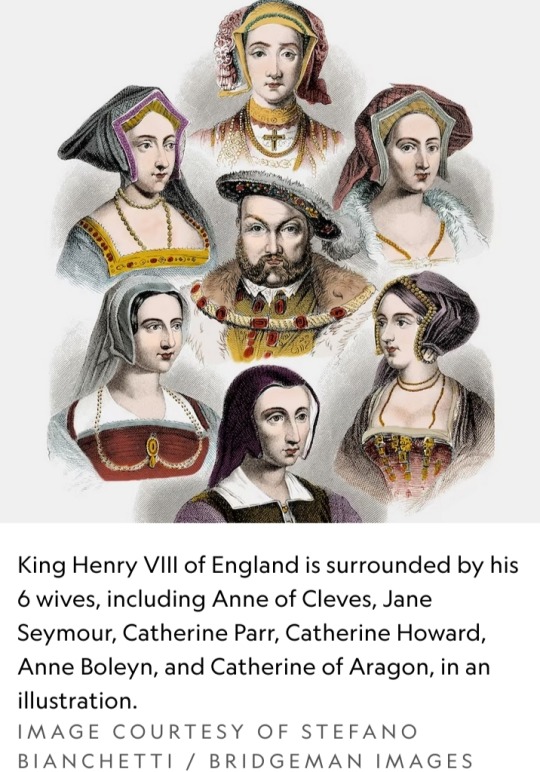

Authors Toby Marlow and Lucy Moss found inspiration for their hit musical in the lives and loves of King Henry VIII, but SIX tells the story from the women’s point of view.
Each queen gets her moment in the spotlight to explain her fate of being “Divorced. Beheaded. Died. Divorced. Beheaded. Survived.”
Divorced: Catherine of Aragon
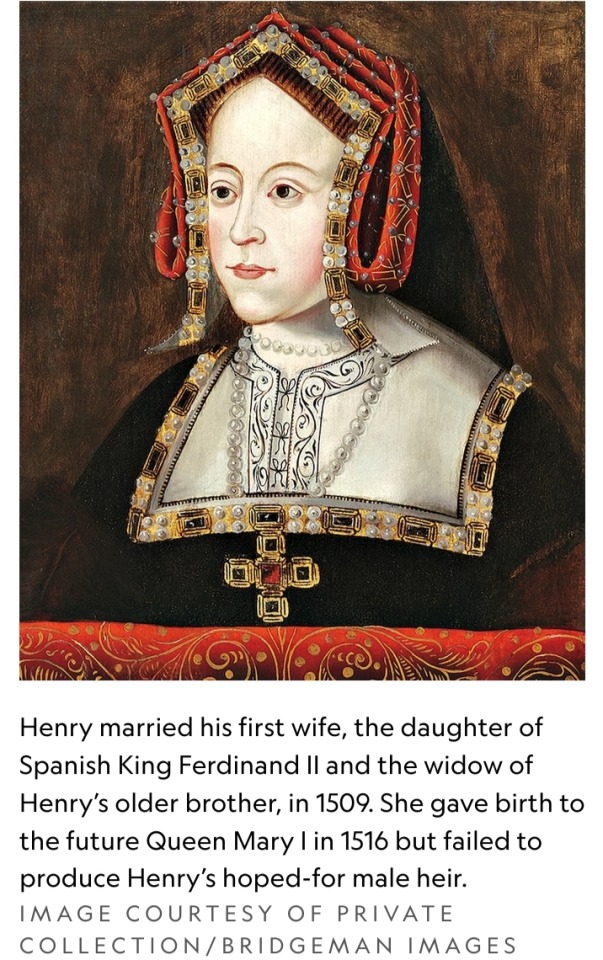
Larger-than-life Henry VIII ruled England for 36 years (1509-1547), raging war against France and Scotland, separating from the Catholic Church, and paving the way for the constitution of England, among other political achievements.
But young Prince Henry was not destined to be king. When his older brother Arthur died in 1502 at age 15, Henry became the heir to the throne.
When Arthur died, Henry didn’t just inherit the throne—he inherited his brother’s fiancée, Catherine of Aragon.
After marrying, the two became parents to a son—who tragically died two months later.
Their daughter Mary was born in 1516, but by 1526, the marriage had not produced the male heir Henry needed to secure the succession.
He began looking for a new bride, even though the Catholic Church made it impossible to divorce Catherine.
In the end, the answer was simple:
Henry believed he was a king ordained by God, so he, not the pope, had ultimate authority over his kingdom; as such, he could grant his own annulment.
This decision led to England’s break with the Catholic Church—and the creation of the Anglican Church.
After their annulment, Catherine was given the title “Dowager Duchess of Wales,” and she lived out her days at Kimbolton Castle. She died in 1536 from cancer at the age of 50.
Mary, by the way, went on to become Queen of England and Ireland from 1553 to 1558, during which time she fought to reverse the English Reformation, brought about during her father’s reign.
Beheaded: Anne Boleyn
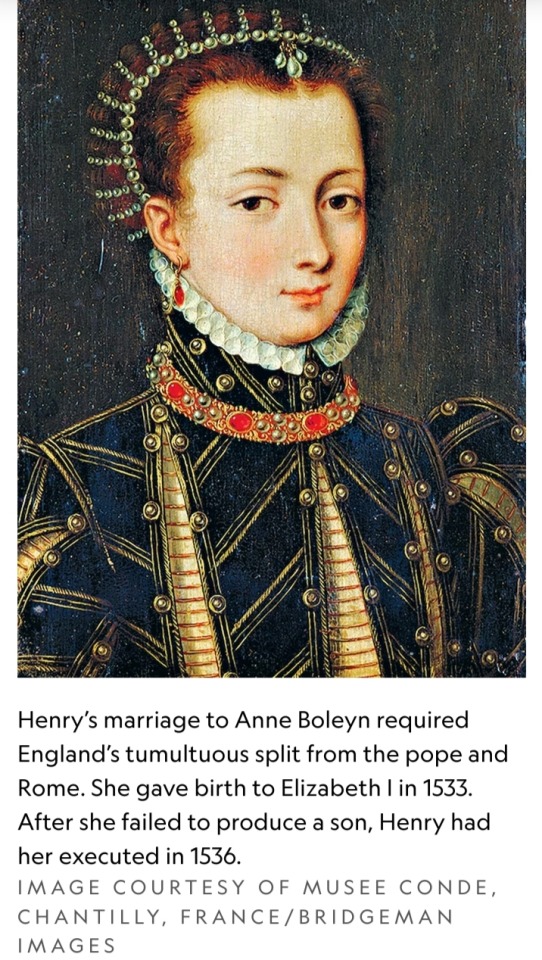
While still married to Catherine, Henry had begun wooing a court beauty, Anne Boleyn, and was determined to marry her.
A lady-in-waiting to Catherine, Anne was sophisticated, charming, and confident.
She is commonly believed to be the wife he loved the most.
As his advisers worked on “the King’s great matter” of the divorce, the couple had to wait seven years to be married—though the two flaunted their relationship in court.
He wrote her love letters, which still exist today:
“I hope soon to see you again,” he wrote, “which will be to me a greater comfort than all the precious jewels in the world.”
Anne was six months pregnant when they finally said “I do” in June 1533. Three months later, she gave birth to Elizabeth I.
She had two stillborn children and suffered a miscarriage in 1536; the fetus appeared to be male. Henry still did not have his heir.
Little by little, Henry grew tired of Anne, and his eye caught sight of a new woman: Jane Seymour.
To end the marriage, Henry needed to find a way out—and he found it through accusing Anne of high treason.
For the crimes of adultery, incest and plotting to murder the king, Anne was arrested and imprisoned in the Tower of London.
She went on trial, denied all charges, but was found guilty.
Anne was beheaded on 17 May 1536 at the Tower and buried in an unmarked grave beneath the Parish Church there.
Died: Jane Seymour

While married to Anne, Henry visited the Seymour home. It was believed that was when he first laid eyes on Jane, who served as a lady in waiting for both Catherine of Aragon and Anne Boleyn.
As in his relationship with Anne, Henry began courting Jane while still a married man.
Beautiful and reserved, she was a stark contrast to his first two wives. Before long, rumors of his attraction to her spread.
He proposed to her the day after Anne Boleyn’s execution, and they were married a month later.
She bore a son, the future Edward VI, in 1537 but died within 12 days of giving birth.
She is the only wife buried with him in the same tomb in St. George’s Chapel at Windsor Castle.
Divorced: Anne of Cleves
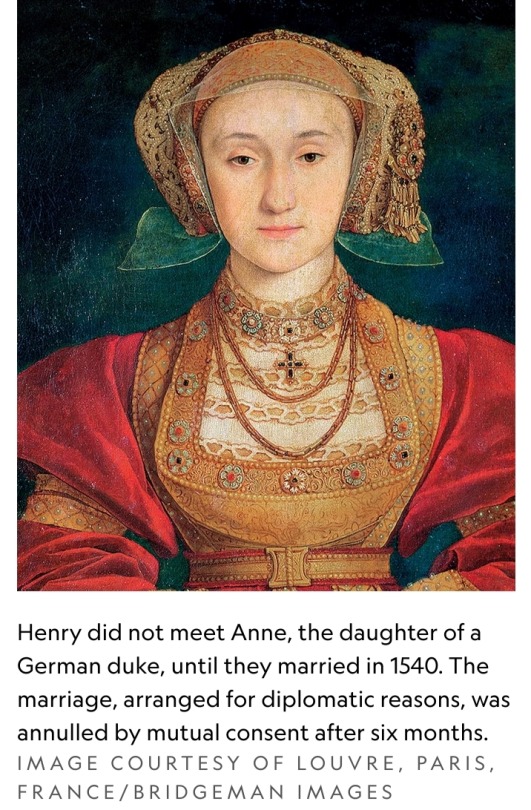
Henry’s ministers searched high and low for a new wife for the king, whose abysmal marital reputation preceded him.
Anne of Cleves, the daughter of a German duke, became a prospect for diplomatic reasons:
The marriage would ally England with a Protestant duchy, thus solidifying England’s religious reformation.
But Henry needed to know what she looked like, so, on the advice of Thomas Cromwell, he sent his favorite court painter, Hans Holbein the Younger, to the German duchy.
He approved based on the portrait.
When Anne arrived, however, he was crestfallen to see she was not as fair as reported.
(Remember, he was no great looker at that time of his life—obese, in chronic pain, with an unpredictable temper.)
Nevertheless, they were married at Greenwich Palace on 6 January 1540, but he was already looking for a way out.
The marriage was annulled six months later, on the technicality that it hadn’t been consummated.
She was given Hever Castle (Anne Boleyn’s former home) and the title “King’s Beloved Sister.”
Thomas Cromwell was not so fortunate; Henry had him executed for his miscalculation.
Beheaded: Catherine Howard

Henry was 49, and Catherine was 19 or 20, when he spotted her among the ladies in waiting to his previous wife, Anne of Cleves.
Vivacious and full of energy, the young Catherine had no choice in the matter. The pair married in 1540, three weeks after his separation with Anne.
She became his trophy wife.
No doubt turned off by her much older husband (who suffered from various ailments including ulcerous legs), she fell in love with Thomas Culpeper, one of Henry’s young advisers.
The Archbishop of Canterbury, Thomas Cranmer, found out, and he reported her indiscretions—including those that occurred before their marriage with other men—to Henry.
She was charged with “unchastity” before her marriage, concealing her indiscretions, and adultery: acts of treason.
She was executed on 13 February 1542.
Survived: Catherine Parr
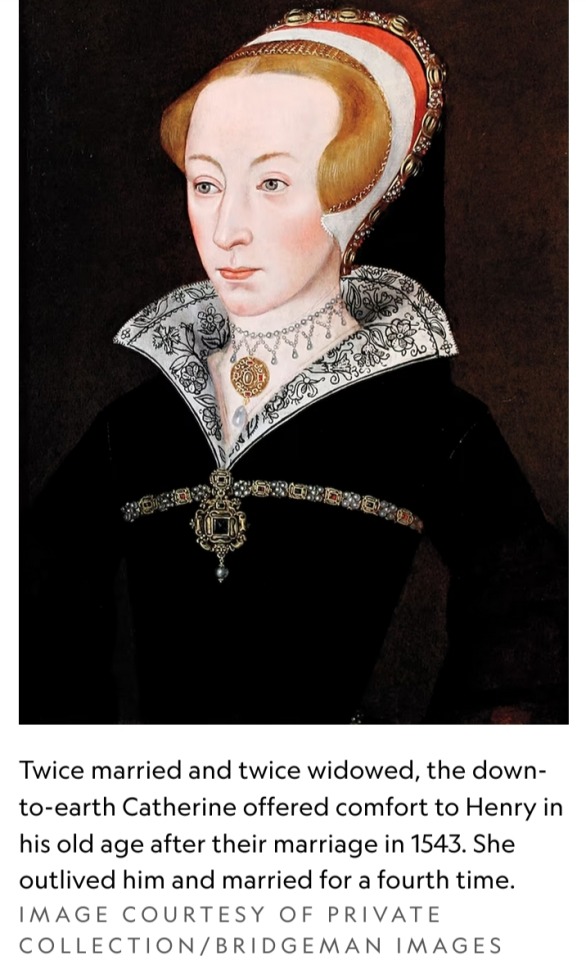
Twice married and twice widowed, the down-to-earth Catherine was reluctant at first to marry Henry. Who wouldn’t be?
She knew the fates of his previous wives, though she also knew that refusing the king could have drastic consequences.
She had caught his eye when she had been part of the household of Princess Mary, the king’s daughter.
They were married in 1543. By all reports, she was a loving, pious wife who offered comfort to Henry in his old age.
She helped Henry to reconcile with his two daughters, Mary and Elizabeth, and ensured they were educated and restored to succession.
She outlived him and married for a fourth time.
#King Henry VIII#Catherine of Aragon#Dowager Duchess of Wales#Anne Boleyn#Jane Seymour#Edward VI#Anne of Cleves#Thomas Cromwell#Hans Holbein the Younger#Thomas Cranmer#Catherine Howard#Catherine Parr#Mary Tudor#Mary I of England#Bloody Mary#Queen Elizabeth I#Queens of England#British Royal Family#King’s Beloved Sister
13 notes
·
View notes
Text
Some of the amazing artwork of artist QiJin He 👑❤️❤️ here are Henry's Six Wives






Queen Anne Boleyn at her coronation



#catherine of aragon#anne boleyn#jane seymour#anna of kleves#katherine howard#catherine parr#henry viii#tudor art#tumblr art#beautiful#six queens#queens of england#👑👑👑👑👑👑❤️
30 notes
·
View notes
Text
"A fusion of two cultures"
Geography does not always accurately describe a queen as it does a king, who was defined by the subjects he ruled (Alfred the Great was king of the English) or his realms (Edward II was king of England who inherited a realm from his father). Kings were rooted in a place, their language and cultural traditions were those of their ancestors, their royal revenues stemming from the agriculture and commerce of the lands they inherited. Medieval kings were peripatetic; they moved around to govern far-flung regions of their realm or to conquer another piece of land, but their title was stable. In short, they were synonymous with their realms. Queens, on the other hand, except for a small minority of exceptions, did not inherit a realm from their father. Instead, they moved from the realm of their birth to marry and live with a king. This move might be just a short distance, involving little more than a day's journey- for example, from Kent to Westminster. Or the distance could be considerably greater, like the trip that Anna Agnesa Yaroslavna, the Grand Duchess of Kiev, made when she moved to Paris to marry Henri I, king of France, in 1051. She was queen of the French, but not a French queen. Unlike her husband, a foreign queen's personal and familial identity was a fusion of two cultures: she left her family, embraced a new one, adapted to a new culture and learned what was expected of her. So, to call Edward I of England's wife an English queen is both correct and incorrect. Her name at birth was Leonor and she grew up speaking Spanish. She had a French mother and an English grandmother, and lived her entire adult life as a queen of England. Foreign-born queens forged important links across the wide and diverse geography of Europe through the retinue of noblemen and women (scholars, clerics, writers, artists, architects, musicians), and books, music, fashion, and food, they brought with them. Eleanor, in her letters to her family in Castile, asked that ships coming to England bring her oranges- a touch of the Mediterranean to comfort her in the cool rainy winters of her new home. Foreign-born queens faced the sort of challenges a newcomer often does- new language, new customs, hostility from local nobles suspicious of outsiders. However, in ways both large and small, a queen was a powerful force for political, economic, intellectual, religious and cultural dispersion.
Theresa Earenfight - Queenship in Medieval Europe
#middle ages#theresa earenfight#queenship in medieval europe#anne de kiev#henri i#éléonore de castille#queens of france#queens of england
5 notes
·
View notes
Text
Mongolian history class, 2022, start of the semester. We're having a discussion on animal slaughter, featuring the one Mongolian student in our school.
The student explains that he's slaughtered animals himself, and there are two ways of doing it that avoid the spilling of blood. For a small animal like a chicken, you reach up into the chest of the animal and sever the arteries. For a larger animal like a camel, there's a spot on the forehead that, when hit hard enough, causes the animal to die instantly.
While this discussion is going on, a couple of the students are sharing something back and forth on their phone
The professor calls this out, asking if what they're sharing is more interesting than Mongolian animal slaughter
The room is dead silent for a few seconds. The two students look at each other awkwardly.
Eventually, one of the students pipes up:
"Well, the queen of England just died."
And without missing a beat, another student:
"Did they hit her on the head like a camel?"
#genuinely i'm so glad this is how i learned the queen died#happy fucking (late) anniversary#felt i should share it it's just. perfect y'know#there is no queen of england
38K notes
·
View notes
Text
Monarch #8
These were getting wordy, so I'm going to try keep them short and pithy. I encourage you to look them up if you want to know more, and why wouldn't you? ;)
Who: Sweyn Forkbeard
Also Known As: Sveinn Haraldsson tjúguskegg (Old Norse), Svend Tveskæg (Danish),
Who He's Not: Forkbeard (phycis phycis)
Where: England, Denmark (986-1014), Norway (999/1000 - 1013/14)
Succeeded: Æthelred the Unready (and was also succeeded by Æthelred the Unready)
Reigned: 1013-1014
Born: 17th April, 963, Denmark, the son of Knut Danaást or Harald Bluetooth and Tove or Gunhild.
Died: 3rd February, 1014
Buried: Roskilde Cathedral (Denmark) or Lund Cathedral (Sweden)
Consorts/Children: First married Świętosława and also possibly Sigrid the Haughty (complicated and possibly mythical), and between them (or not) was (were?) the mother(s) of Harald, who became king of Denmark, Cnut, who became king of England, Estrid, Gytha, Gunnhild, Santslaue, and Thyra.
Sweyn Facts!
He revolted against his father and seized the throne of Denmark!
Joined forces with the king of Sweden against Norway, and they divided the kingdom between them!
Allegedly in response to the St. Brice's Day Massacre, where supposedly his sister Gunhilde was killed, Sweyn invaded England. He ruled a year or so before dying. His eldest son succeeded him as king of Denmark, and the Danelaw proclaimed Cnut as king of England. The English sent for Aethelred, and drove Cnut out. He came back in 1016.
It's hard to have any more King Sweyn of England facts because he lasted such a short time.
Wife Facts!
A Polish princess, the daughter of Mieszko I, Świętosława is a presumed name, based on the fact that a sister of Cnut had the name. She may have been a combination of two wives of Sweyn - Gunhild (the Polish princess, Cnut's mother) and Sigrid the Haughty, the mother of Sweyn's daughter, Estrid. Whatever her name, or whether she is one or two women, this wife (wives) is (are) the mother(s) of Harald II of Denmark, Cnut of England, and Estrid.
#monarchs#monarchy#kings of england#queens of england#sweyn forkbeard#Świętosława#Sigrid the Haughty
0 notes
Text


Shout out to the day i killed the queen via AO3, legendary (name of the fanfic is jigens sick adventure, yes it is a sickfic)
#archive of our own#ao3#queen elizabeth#meme#ao3 meme#fanfiction#fanfic#i killed the queen#im sorry#there's no queen of england#lgbtq#funny#tumblr#twitter#help lmao#wtf#seriously wtf
80K notes
·
View notes
Text

this comic will probably only ever work during the time it was originally posted but i might as well post it here anyways for ARCHIVAL purposes
20K notes
·
View notes
Text


#so true bestie
#megamind#mega mind#england#uk politics#liz truss#queen of england#queen elizabeth#prime minister#politics#british politics#news#current news#meme#memes#*myedits
35K notes
·
View notes
Text
#henrietta maria of france#charles i#queens of england#enfants de france#novels#catholic#english civil war#keep it stuart#the persecuted church
2 notes
·
View notes
Text
i'm a history nerd with an interest in royal history, sooooo
i know that England & Scotland didn't became Great Britain/the United Kingdom till the end of the Stuart era, but i wanna focus on the houses of england and (except for house of denmark) only england
#english royal family#english royal history#royal history#house of wessex#king of england#kings of england#queens of england#queen of england#house of denmark#house of godwin#house of normandy#house of blois#house of anjou#house of plantagenet#house of york#house of lancaster#house of tudor#house wessex#house denmark#house godwin#house normandy#normandy#house plantagenet#plantagent#house york#house anjou#house tudor#house lancaster#tudors#history poll
1 note
·
View note
Text

Princess Mary and the Princess Elizabeth 👑
Via Qijin He on IG
#mary#elizabeth#princess mary#princess elizabeth#queens of england#henry viii#catherine of aragon#anne boleyn#illustration#beautiful art#tudor#tudors#house of tudor#mary I#elizabeth I#👑👑👑👑👑
9 notes
·
View notes
Text
“people in gotham would know batman is real” “he can’t be an urban legend cause he’d be caught on camera” “people could just ask someone in gotham if they’ve seen him” have u considered that gothamites enjoy lying.
2K notes
·
View notes